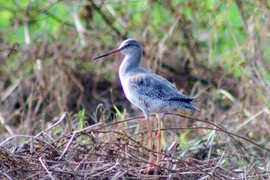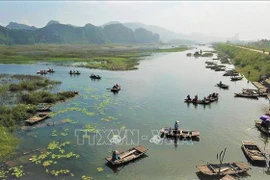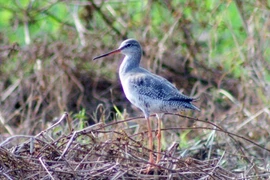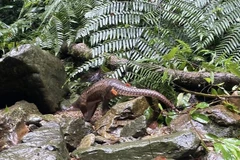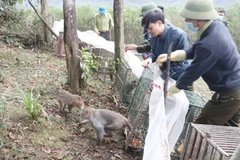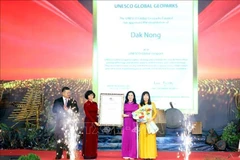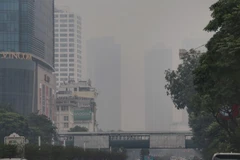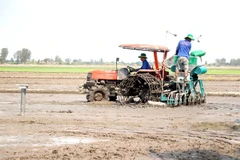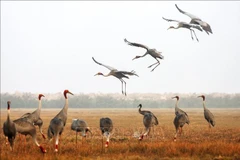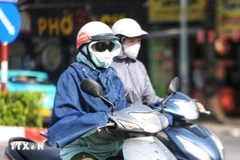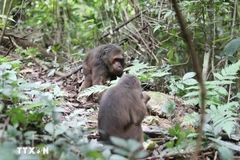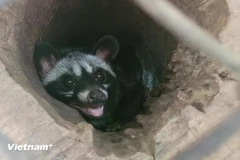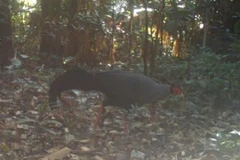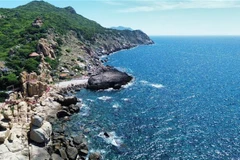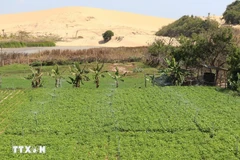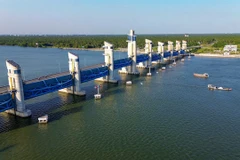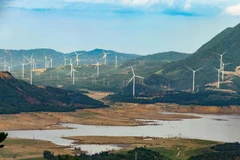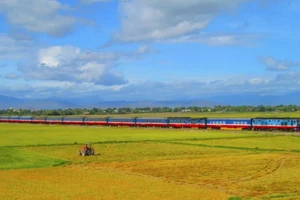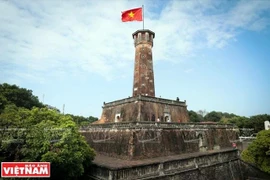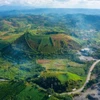HCM City (VNA) – Vietnam is home to nearly 12 million hectares of wetlands or 37 percent of the total natural land area. The majority of these wetland can be found in the Mekong Delta region of southern Vietnam.
The Mekong Delta counts four Ramsar sites (wetlands of international importance designated under the Ramsar convention). The sites are the Ca Mau Cape National Park in Ca Mau province, the U Minh Thuong National Park in Kien Giang province, Lang Sen Wetlands Reserve in Long An province, and Tram Chim National Park in Dong Thap province.
The Ca Mau Cape National Park was established in 2002.
Encompassing Dat Mui, Vien An and Dat Moi communes in Ngoc Hien district of Ca Mau province, the park covers over 41,800ha, including 26,600ha of coastal areas and 15,200ha inland.
It is home to 93 species of birds, 26 species of mammals, 43 species of reptiles, nine species of amphibians, 139 fish species and 53 mollusk species. Of these, many are listed in Vietnam's Red Book and the International Union for the Conservation of Nature’s Red Book that heralds the plight of endangered species.
In 2009, the United Nations Educational, Scientific and Cultural Organisation recognised the Ca Mau Cape National Park as a World Biosphere Reserve.
In April 2013, the park became the 2,088th Ramsar site in the world and the fifth Ramsar site in Vietnam.
Located about 65km to the southwest of Rach Gia city, the U Minh Thuong National Park, one of the two most important peatland areas in Vietnam. U Minh Thuong boasts unique and rare features that are not found anywhere else in the world.
Founded in 2002, the park is surrounded by a 60km-long embankment system and covers some 21,100 ha of land in U Minh Thuong district, including about 8,000 ha of the core zone and 13,000 ha of the buffer zone.
The U Minh Thuong National Park is at the core of the Kien Giang Biosphere Reserve, the fifth in Vietnam earning UNESCO recognition. Among the forest ecosystems on acid sulfate soil in the Mekong Delta, only this park contains the characteristics of a purely primeval forest.
The Lang Sen Wetlands Reserve is Vietnam’s seventh Ramsar site, a preserved and unspoiled natural wetland with limited human impact.
This wetland area covers 4,802ha in three communes of Vinh Dai, Vinh Loi and Vinh Chau A (Tan Hung district). The reserve is home to about 156 species of wild plants and 149 species of vertebrates, of which 13 are listed in the Vietnam Red Book.
Located in Dong Thap province’s Tam Nong district, the Tram Chim National Park is the fourth Ramsar site in Vietnam and the 2,000th worldwide.
 Tram Chim National Park is the fourth Ramsar site in Vietnam and the 2,000th worldwide. (Photo: VNA)
Tram Chim National Park is the fourth Ramsar site in Vietnam and the 2,000th worldwide. (Photo: VNA)
The park has a special-use forest with distinctive wetland ecosystems spanning more than 7,300 hectares.
In order to cope with climate change and contribute to socioeconomic development, the surrounding community is looking to long-range planning to preserve and sustainably maintain biodiversity in the wetlands.
Director of the Ca Mau Cape National Park Le Van Dung said the park has coordinated with 10 local households and international organisations and units such as the Swedish International Development Cooperation Agency and the Worldwide Fund for Nature in Vietnam to support community-based eco-tourism.
Meanwhile, Dong Thap has stepped up the communications to raise public awareness of biodiversity conservation, environmental protection, and climate change in the region.
A group of experts from the Ho Chi Minh City University of Technology and the Wollongong University of Australia have launched a project on environmental management using AI/IoT technologies to ensure conservation of the Tram Chim National Park./.


